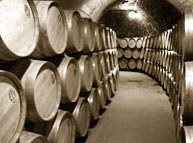

There can be no doubt that Spain is one of the most famous wine producing countries in the world. From La Rioja to Cava, Spain makes a range of great wines and sparkling wines which are exported across the world. And it is no surprise that this country should be so good at it as the winemaking industry has been around in Spain for many centuries.
It's impossible to determine the exact origin of vines in Spain, as seeds have been found from the cenozoic or tertiary era (as much as 2.5 million years ago), and the great abundance of native vine varieties allowed the early viticulture. Some archeologists believe that the vines were cultivated as early as 4000 years ago.
The Phoenicians invaded the South of the Peninsula and founded the city of Cadiz around 1100 b.c. and viticulture increased, however it was the Carthaginians (from modern Tunisia) who brought new and advanced techniques for cultivating wines. However it is said that the real Spanish wine history began after the conquest of Hispania by the Romans, once Carthage was defeated by Rome in the Punic Wars.
During the Roman control of Hispania, Spanish wine was traded and exported to the entire empire, and it's two main production regions at the time were Tarraconensis (its capital was Colonia Iulia Vrbs Triumphalis Tarraco, modern day Tarragona) and Baetica, called after its river Baetis (though today the river is called Guadalquivir) another Roman region in the South of Spain, whose capital was Corduba, modern day Cordoba.

For many years more Spanish wine was exported to Galia (France) than Italian, as amphoras found in Roman settlements in Normandy, Brittany, Provence and Bordeaux. Should you ever visit Spain we recommend you to taste as many different Spanish wine varieties as you like, you will not regret it.
Rome was a huge empire and the need to supply its legions increased the already notorious Spanish wine trade, despite the fact that its quality wasn't always great, and some of its harvest "were only good enough to get drunk on" Ovid wrote of a popular wine sold in Spain, known as Saguntum.
Upon Rome's fall Spain was no longer part of a great empire and due to its geographic location it became vulnerable to invasions. Such is the case of many Germanic invasions which ended up with the loss of many vine plantations. There is little information about the progress of viticulture and wine making in the following centuries, but it seems like there was some kind of wine industries in the Muslim occupation in Al-Andalus.
The consumption of alcohol was forbidden for Muslims, however the Moorish rulers had a rather ambiguous position in relation to wine. We know that vine cultivation continued and even improved. Many caliphs and emirates were vineyard owners and drank wine, despite the Koranic laws that forbid it.
The most liberal rulers allowed the Christians to continue tending to their vineyards and making wine; this was specially true of monasteries. Things would soon change for the Caliphs, but Spanish wine would progress even in the most obscure years of Spanish history.
In 1492 two important events took place. The Muslims were either kicked out or forced to convert, those who didn't had rather a hard time. This all happened because the Catholic Monarchs, Queen Isabella and King Ferdinand decided they wanted to unify the peninsula exclusively under one creed: the Christian one. On the other hand America was discovered pretty much by accident as a Genovese sailor, Cristopher Columbus, was really looking for an alternative route to reach the Indies. Be it as it may, it was the Spanish crown that had funded the voyage and who got the rights to trade to and from the new continent almost exclusively.
So, the possibility of exporting Spanish wines came up again. Bilbao, in the Basque Country became a large port where Spanish wines were traded to the Bristol, London and Southampton markets. It is said that the quality of these wines was among the highest of the time. It also had a high alcoholic content, which allowed mixing it with softer wines from colder regions of France and Germany.
Continue reading about history of wine in Spain.